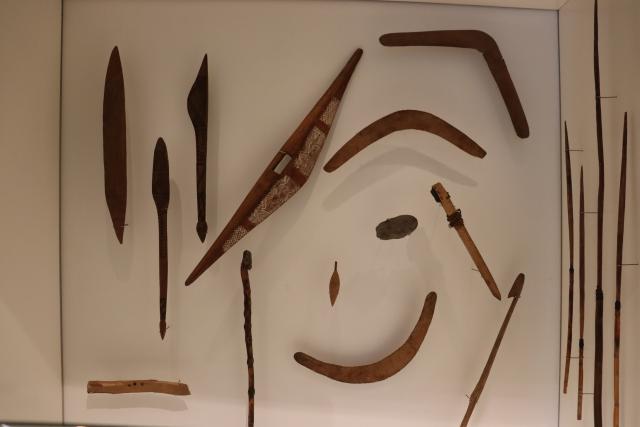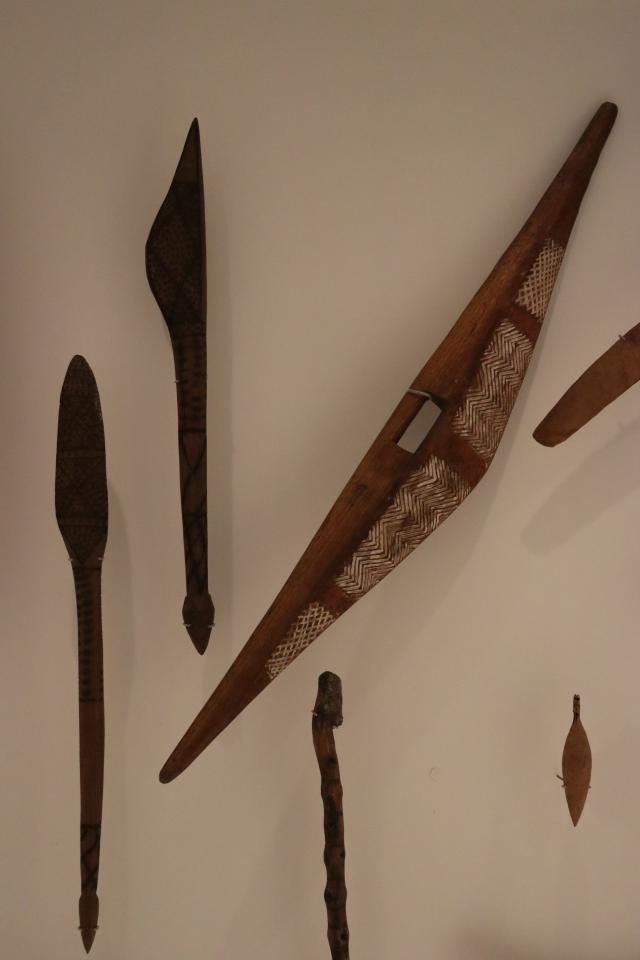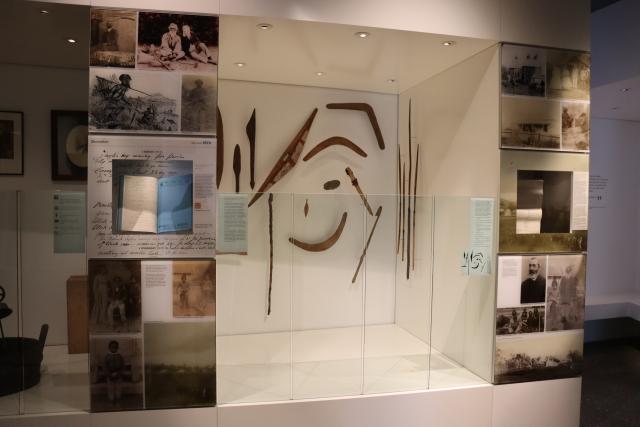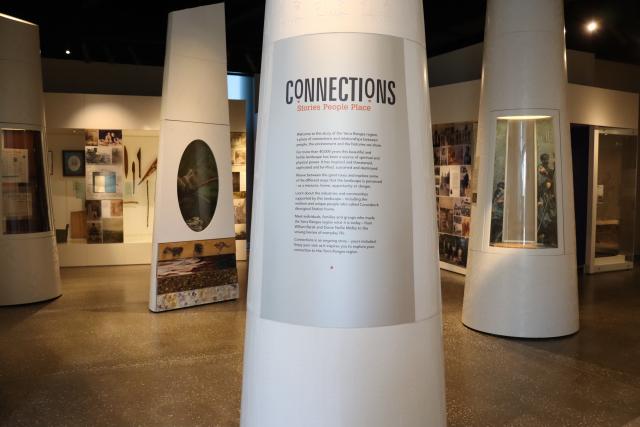
By Mikayla van Loon
Following the recent victory of two sales of William Barak’s artworks to be reunited with family and Country, learning more about the Wurundjeri Elder behind the art is as simple as visiting Yarra Ranges Regional Museum.
For a glimpse into the period in time when Barak was living at Coranderrk, creating art and interacting with the de Pury family of Yeringberg, the Connections Gallery is the perfect place to start.
The current display highlights the relationship between Barak and the de Pury family, a relationship no one has ever really known the full extent of.
What is clear is at some point William Barak gifted or presented the de Pury family with many artworks, like those returning to Wurundjeri Country from New York, as well as a number of wood carved items – boomerangs, shields and clubs.
Collections curator Ruth McLean said having been approached by Guill de Pury a few years ago and consulting with the Wurundjeri Land Council and the Aboriginal Advisory Board, it was decided the collection of items should be donated to the museum.
“The decision at the time was that this is an appropriate place given that there’s no Aboriginal keeping place within the Yarra Ranges and we have the capacity to care for these items but also to keep them on Country,” she said.
“They could go to the Melbourne Museum but that’s quite far away from Coranderrk.”
While the 14 artworks on display at the Museum are just a small part of the history of Coranderrk, Ms McLean said there’s something quite powerful about being in their presence because of the story they tell.
“All of this content is focusing on the relationship between the de Pury’s and William Barak but there’s still a lot of information about William Barak himself in here.
“There’s a lot of images of him with his wife and his son and photos of him out at Yeringberg with the de Pury’s and friends of theirs.
“It’s also, I guess, more of a general understanding of Coranderrk, [there’s] a whole wall of photographs and insight into life at Coranderrk.”
Although displaying the friendship of some sort between the de Pury’s and Barak, there is no doubt there was a power imbalance between them and the fate of the people at Coranderrk was to be displacement from Country.
The history of Coranderrk dates back to its establishment in 1863 by Uncle Simon Wonga but throughout the years, colonial management saw the deterioration of the quality of life for Aboriginal people, something Barak fought hard to change.
Ms McLean said by no means does the Museum’s display cover the vast history of Coranderrk and Barak, nor the unfair treatment of First Nations peoples but it can be the beginning of introducing people to the history, with the hopes they become curious to learn more.
“If we can play a role in helping to teach people about the history of this area and the important role that Coranderrk has played, I think that’s great,” she said.
“First and foremost, you want to do what’s right by the community and particularly with Indigenous belongings…but also be able to share the stories that come with the objects.”
Whether on display or not, Ms McLean said there are always ways in which people can view the collection, whether online or by making an appointment to see the collection in storage.
“That’s a really important part of what we do here. Putting things on display in an exhibition is one way but there’s other ways that we can encourage people to engage with the items and the stories that come with them.
“The ideal, I guess, is removing our voices from it though. So presenting stories in the community’s voice rather than through us…we try to find a way to present those stories ideally using other people’s words as much as we can.”
Part of the Museum’s collection holds an extensive number of daily diaries from the de Pury family during the existence of Coranderrk and Barak, with entries relating to both.
Although much of the hand writing is difficult to decipher, Ms McLean said the Museum would like to transcribe all of the diaries to understand more about the relationship between the de Pury’s and Barak.
But for now the Museum is grateful and privileged to hold the belongings they do for the teaching of William Barak’s story and sharing the history of Coranderrk with visitors to the gallery.









